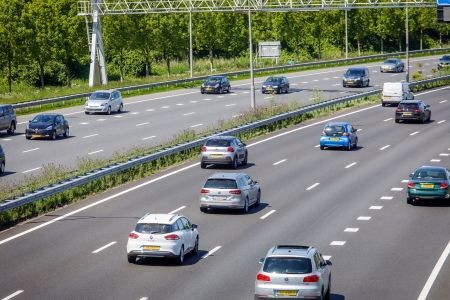For children, the use of child protection equipment[i] decreases the risk of serious or fatal injuries. The safety benefits do, however, strongly differ per study, target group and type of equipment. For children aged 1-4, Arbogast et al. [81] found a 78% lower risk of serious injuries when child protection equipment (irrespective of type) was used as opposed to just regular seat belts. For child seats in particular, Zaloshnja, Miller & Hendrie [14] found an 81% lower risk of serious injury for crash-involved children aged 2-3. Elliot et al. [13] show a 28% lower risk of a fatal outcome for children aged 2-6.
For children having outgrown child seats, there are booster seats. They ensure that the shoulder part of the three-point seat belt fits over the child’s shoulder properly and, more importantly, that the hip part runs over the pelvis and not the abdomen, where it may damage the soft tissue in the abdominal cavity [82]. An assessment of 11 international studies based on crash figures shows that the effect of a booster seat in addition to a seat belt varies [15]. In some studies, booster seats were associated with a significant reduction in serious injuries, while other studies did not find any significant effect on the number of fatalities or serious injuries. In only one study, booster seats were associated with an increase of serious injuries.
In 2003, a European guideline[ii] dictated that for children shorter than 1 m 35 or 1 m 50 child protection equipment should be used, both in the front and the back of the car. Whether a height of 1 m 35 (e.g. the Netherlands) or 1 m 50 (e.g. Germany) should be chosen, is left up to the member states. Research by VeiligheidNL (in 2018) among 470 children aged 0-8 showed that 83% of the children were not transported correctly; i.e. they were not properly secured in child seats or were not even in a child seat while being shorter than 1 m 35 [83]. Of the child seats used, 7% were either too big or too small and 49% were not correctly fastened. 59% of the children were not correctly secured in the child seats. If children are not correctly secured, this may reduce the effectiveness of child seats and, thus, lead to an increased injury risk in crashes [13] [84] [85] [86]. A Belgian study, for example, showed that for one third of the children who were secured with protection equipment, the improper use of the seats seriously reduced or annihilated their effectiveness [84].
[i] We have chosen the umbrella term ‘ child protection equipment’, subdivided into baby seats, child seats and booster seats. Other government or manufacturer publications use different umbrella terms, such as ‘ child safety systems’, ‘child seats’, ‘ car seats’ or ‘ car child seats’, while also using different terms for subgroups. It is usually obvious what is meant, even more so if the target group is mentioned.
[ii] Guideline 2003/20/EU, amending guideline 91/671/EEU, effective from 1 March 2006.
